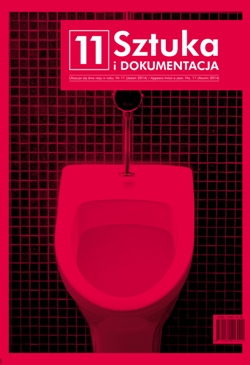Podróże środkowowschodnioeuropejskich artystów w latach siedemdziesiątych
Journeys by Central-Eastern European artists in the seventies
Author(s): Magdalena RadomskaSubject(s): Fine Arts / Performing Arts
Published by: Akademia Sztuk Pięknych w Gdańsku
Keywords: Europa Środkowo-Wschodnia; sztuka konceptualna; sztuka polityczna; utopia; komunizm; Central-Eastern Europe; conceptual art; political art; utopia; communism
Summary/Abstract: The totalitarian communist regime, which fell in Europe in 1989 was totalitarian also in how it had appropriated the semantic fi eld constituting meaning. Travels undertaken by artists outside of the geographical borders of communist countries had therefore the status of an attempt to construct works outside of this semantic system of gravitation, which seemed to control the meanings of notions in use behind the iron curtain. Simultaneously these travels could be called hazardous as they misled the traveller towards the utopia of a free and universal language or - towards misunderstanding – loss and imperfections which appeared when those notions were translated for the Western receiver. Travels were of various kinds - from emigration and from outside the system of references, to trips enabling the relative mobility of notional categories constitutive for the meaning of works. An interesting phenomenon was established with artistic travels to other countries of the Eastern Block, undertaken often within the offi cial framework of international cooperation. They revealed inconsistencies in the language which although propagated as common and readable, appeared as a language appropriating notions. Particularly signifi cant were those works, which problematized the status of travel undertaken within the fame of the Soviet Block - such as art works created as a result of cooperation by Czech, Slovakian and Hungarian artists concerning artistic commentary on the Warsaw Pact intervention in Czechoslovakia, or performances created in Budapest by Yugoslavian artist Bálint Szombathy. Another crucial form of travel was established with trips away from the Capital cities identifi ed with the particular control of the censorship apparatus such as trips by Hungarian neo-avant-garde artists to outside Budapest or those leading out of Moscow practised by the Russian group Collective Actions. These have a particular status of refl ection, a semantic distance from the notional structure. The issue of the translation of codes relating to both the creation and reception of the art work created during artistic travels to the West as early as in the seventies are problematized by Hungarian artist Endre Tót and Yugoslavian Braco Dimitrijević. The art created by them was readable both in the Western and non-Western idiom (E. Tót) and it is rooted in various semantic systems enabling the critical attitude towards historical formation and their discoursive practices (B. Dimitrijević). The last and often ultimate way of travelling was designed by emigrations - both inner and outer. Crucial works on the subject were created by Hungarian neo-avant-garde artists - such as András Halász - equipped with particular sensitivity towards the political context, who, beside the importance of the destination of emigration, emphasized the importance of its context, which functioned as a peculiar baggage dragged by these artists during each and every journe
Journal: Sztuka i Dokumentacja
- Issue Year: 2014
- Issue No: 11
- Page Range: 43-54
- Page Count: 12
- Language: Polish

